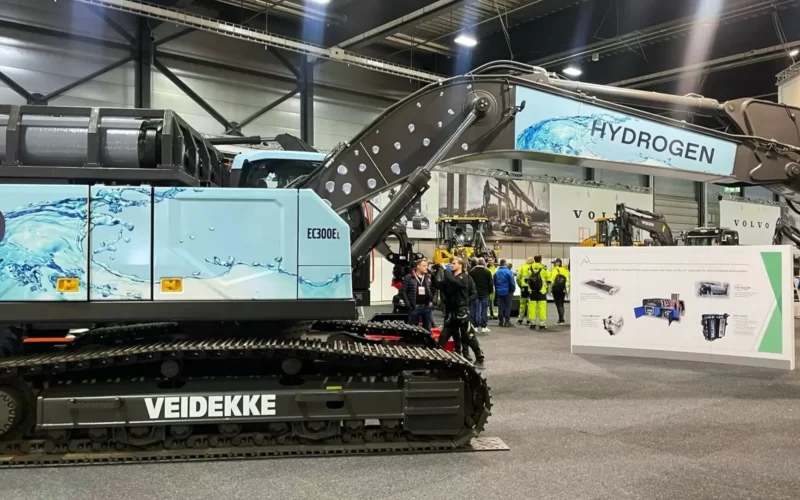
How a Hydrogen-Powered Excavator Is Driving Zero-Emission Construction in Norway
November 12, 2025Picture this: a Hydrogen-powered excavator—a 30-ton Volvo EC300EI—chewing through jagged fjord rock in Northern Norway and leaving zero carbon footprints behind. That’s exactly what went down this spring on the Hålogalandsvegen project, Norway’s biggest-ever transport infrastructure build. They took a trusty diesel workhorse, swapped in a high-tech powertrain, and suddenly you’ve got the first real-world zero-emission construction machine ripping into earthworks.
Inside the Hydrogen Powertrain
This Fuel cell excavator packs a 120 kW Ballard FCmove-XD PEM fuel cell at its heart, sipping hydrogen stored at 320 bar in four tanks. The chemistry inside the cell spits out electricity and nothing but water vapor—no CO₂ in sight. A 300 kW lithium-ion battery kicks in during peak loads to smooth things out and boost efficiency. All of it is orchestrated by smart software, which juggles power between the fuel cell and battery so the electric motors driving the tracks and hydraulic pumps feel every bit as mighty as a diesel rig.
On the safety front, they didn’t take any shortcuts. You’ve got hydrogen sensors scattered around the machine, automatic shut-off valves that snap closed if there’s a leak, and upgraded ventilation to keep the air clean. Hydrogen Solutions rolled in a mobile refueling station, so topping up those tanks only takes about 15 minutes, and they trained the operators and maintenance crews on every last detail.
The Consortium Making It Happen
This pioneering demo wouldn’t exist without a tight-knit seven-member team. Applied Hydrogen in Kongsberg led the powertrain development, while Veidekke handled the on-site deployment. Skanska Norway teamed up with the Norwegian Public Roads Administration to run pilot testing and safety checks. Ballard Power Systems supplied that all-important FCmove-XD fuel cell, Volvo Maskin donated the base EC300EI excavator and technical know-how, and Hydrogen Solutions sorted out fueling logistics and personnel training.
Decarbonizing Heavy Equipment: A Closer Look
Construction gear accounts for a hefty slice of global CO₂ emissions—diesel excavators in Norway typically burn out around 200 g CO₂ per kWh. By contrast, this hydrogen retrofit runs clean at point of use. Partners estimate each machine could dodge about 60 tonnes of CO₂ every year (pending independent verification). On top of that, you get quieter operation and instant torque for smoother digging.
Sure, prototypes of hydrogen fuel cell machines have been tinkered with since the early 2000s, but this is the first full-blown, zero-emission excavator trial on a flagship civil engineering project—proof that Norway remains at the forefront of green construction.
Scaling Up and Looking Ahead
Over the coming weeks, the team will log uptime, refueling frequency and total cost of ownership. If the numbers check out, they plan to convert bulldozers, wheel loaders and more, then export this model straight into other European builds. The goal is to spread zero-emission construction across the continent.
That road won’t be without bumps: building out a reliable hydrogen network, driving down green hydrogen prices and cranking up PEM fuel cell production are all crucial. Luckily, Norway’s wealth of wind and hydro power—combined with the European Green Deal—lays a solid foundation. This pilot serves as both proof of concept and a springboard for new ideas in hydrogen logistics, modular refueling and next-gen fuel cell design.
Could Hydrogen Replace Diesel on Every Construction Site?
Imagine cruising past future work sites and hearing not the roar of diesel engines but the gentle hum of electric motors powered by clean hydrogen. If this first hydrogen-powered excavator proves itself, the ripple effects could reshape equipment manufacturing, workforce training and project planning around the world. Right now, Northern Norway is the proving ground for a quieter, greener way to build.


 With over 15 years of reporting hydrogen news, we are your premier source for the latest updates and insights in hydrogen and renewable energy.
With over 15 years of reporting hydrogen news, we are your premier source for the latest updates and insights in hydrogen and renewable energy.